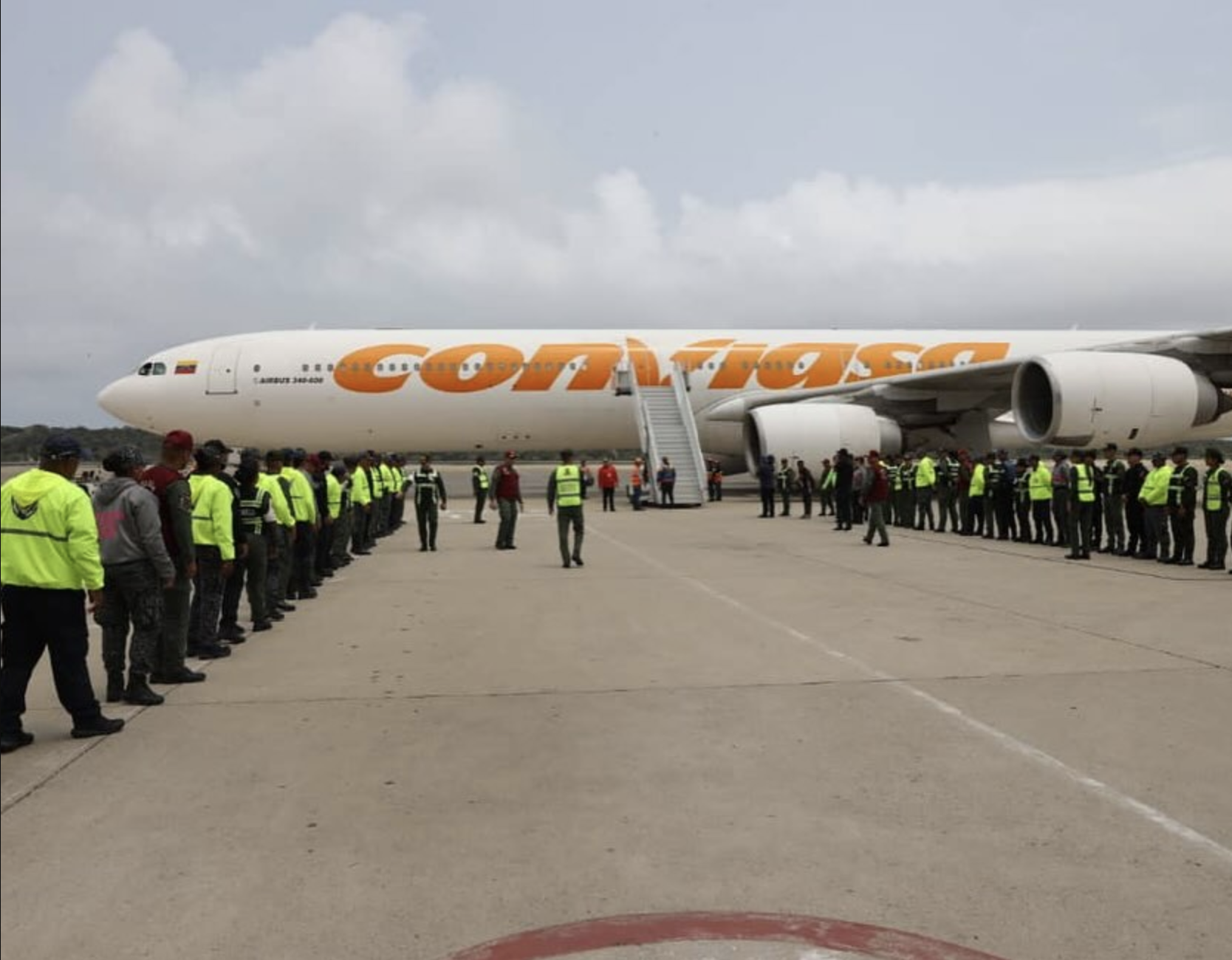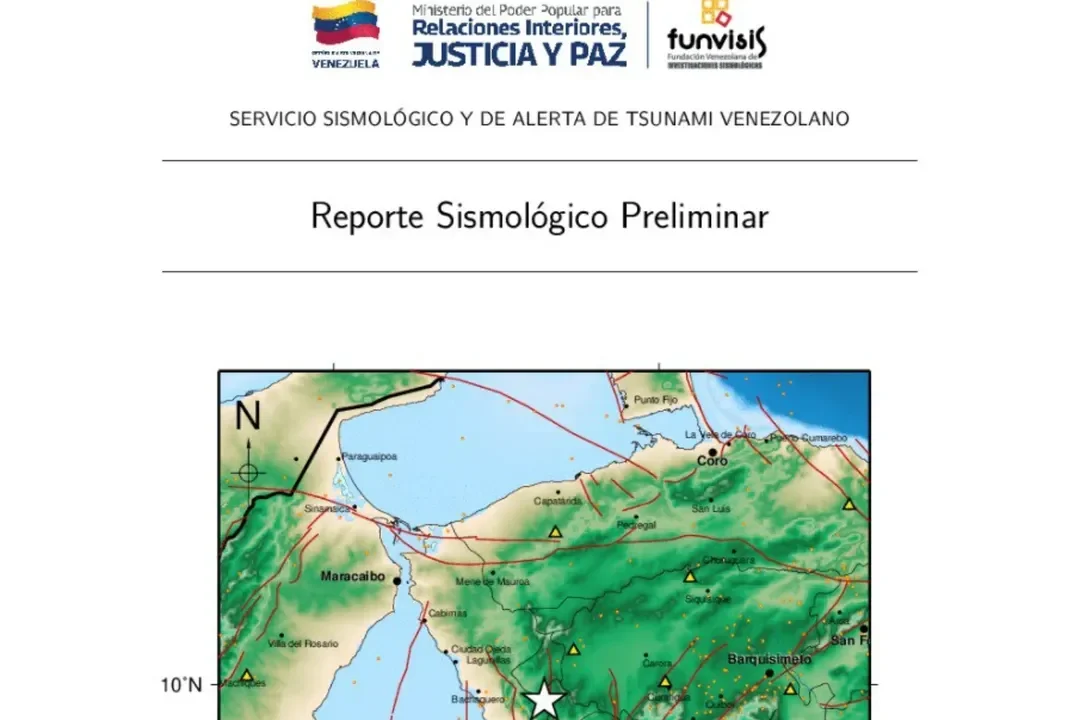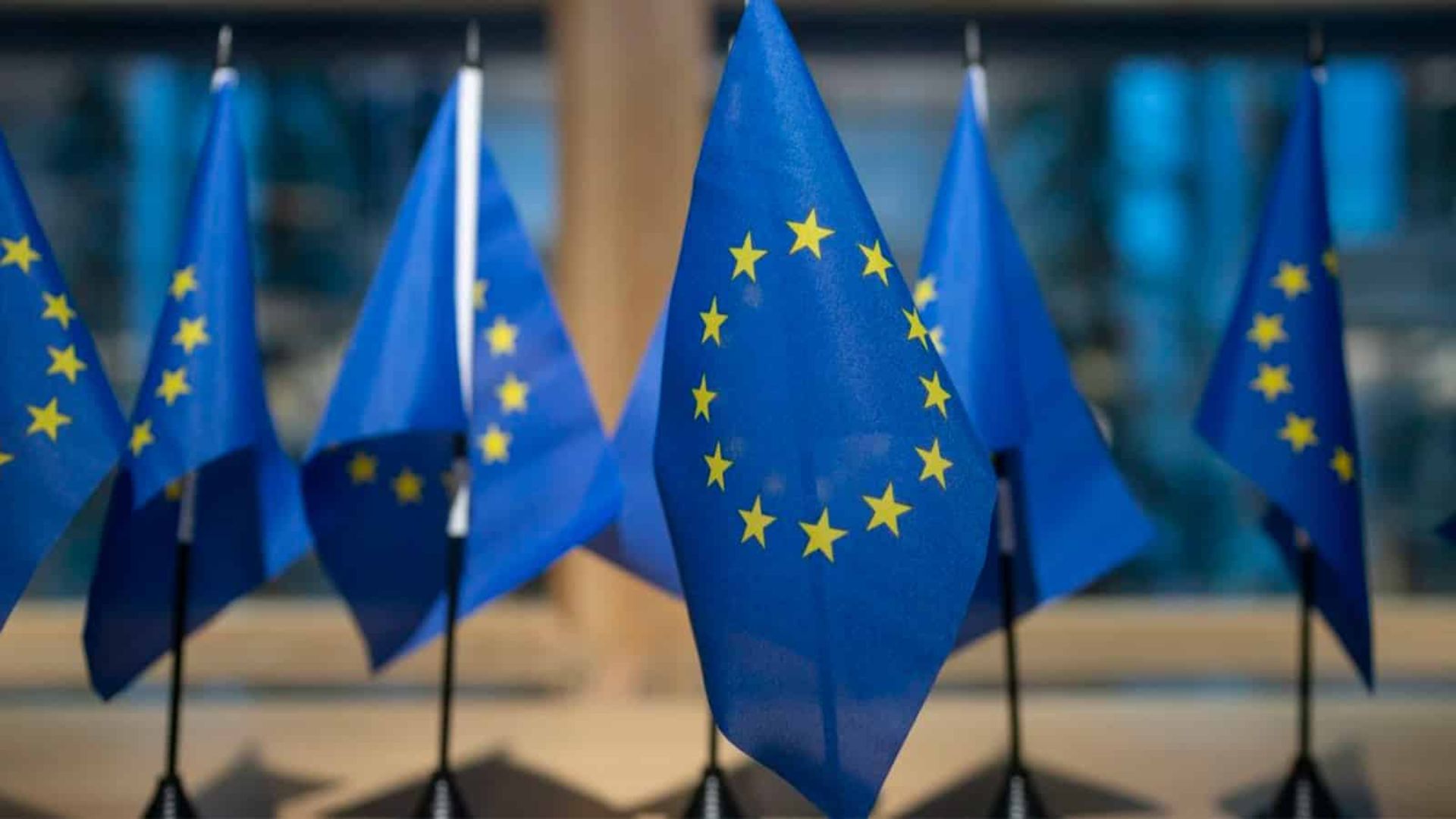On March 20, a Conviasa aircraft carrying 311 Venezuelan migrants repatriated from Mexico arrived at Maiquetía International Airport. Photo: Ministry of Interior, Justice, and Peace.
Guacamaya, March 20, 2025. Amid migration and political tensions, Venezuela received a flight on Thursday with 311 migrants repatriated from Mexico as part of the “Plan Vuelta a la Patria”—Return to the Homeland Plan.
The flight, operated by the state airline Conviasa, landed at Simón Bolívar International Airport in Maiquetía, where the repatriates were welcomed by the Minister of Interior, Diosdado Cabello.
In statements to the state-run Venezolana de Televisión, Cabello emphasized that the migrants, including 21 unaccompanied minors, are returning to a country that offers them “tranquility and peace, far from violence and persecution.”
The Venezuelan official noted that the return of these citizens was made possible through a collaboration with the administration of Mexican President Claudia Sheinbaum.
This agreement between Venezuela and Mexico comes in the context of increasing pressure from the United States, which is demanding that the South American country resume deportation flights for Venezuelan migrants detained in its territory.
The Complex US-Venezuela Dynamic
A first group of deportees arrived on February 10 from El Paso, Texas, following an agreement between Maduro and Richard Grenell, the US Special Envoy for Special Missions. Ten days later, a second group of 177 migrants, previously detained in Guantánamo, arrived from Honduras.
Dissatisfied with the pace of deportations, Trump responded by suspending Chevron’s license to operate in Venezuela. Venezuelan President Nicolás Maduro then declared that the measure would affect dialogue between the two nations as well as the flights Venezuela had planned to repatriate its citizens.
Despite these statements, Richard Grenell stated on March 13 that Venezuela would resume deportation flights for its citizens from the United States. However, the flight expected the day after the announcement was suspended due to weather-related issues.
Just two days later, on Sunday, the Trump administration sent 238 Venezuelans to the Terrorism Confinement Center (Cecot) in El Salvador, accusing them of belonging to criminal organizations such as the Tren de Aragua.
This move could indicate a lack of coordination between the State Department and Special Envoy Grenell, according to a source within the Trump administration consulted by Guacamaya. While Grenell claimed that Maduro had agreed to resume repatriation flights, Secretary Marco Rubio acted as if the opposite were true, threatening sanctions against Venezuela if the country did not accept repatriates—something it had already done.
In response to the flights to Central America, Venezuelan President Nicolás Maduro requested on Wednesday that his Salvadoran counterpart, Nayib Bukele, repatriate the Venezuelan migrants transferred to the maximum-security prison. Maduro rejected the criminal accusations against the deportees, aligning with his government’s previous statements that labeled the move as a “kidnapping.”
Repatriations Under Pressure
The “Plan Vuelta a la Patria” has facilitated the return of over 900 Venezuelans in recent weeks, though not all of them came directly from the United States. These figures starkly contrast with the nearly 8 million citizens who have left the country since 2014, according to United Nations data.
Meanwhile, the US State Department has warned that it will impose stricter sanctions if Venezuela does not accept new deportation flights. The Bureau of Western Hemisphere Affairs also denied that Venezuela is conducting repatriation flights through Mexico and “urged the scheduling of consistent weekly repatriation flights.”







